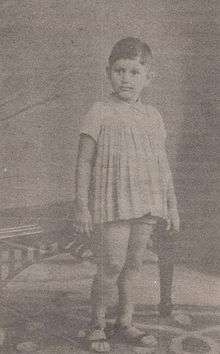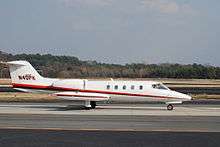Upali Wijewardene
Philip Upali Wijewardene (Sinhala: උපාලි විජේවර්ධන; 17 February 1938 – 13 February 1983) was a Sri Lankan business magnate. Considered one of the best known entrepreneurs in Sri Lanka, he was the founder and Chairman of Upali Group, the first multi-national business in Sri Lanka.
Upali Wijewardene | |
|---|---|
උපාලි විජේවර්ධන | |
.jpg) | |
| Born | 17 February 1938 Kamburupitiya,Sri Lanka |
| Died | 13 February 1983 (aged 44) Straits of Malacca |
| Cause of death | Aircraft mishap |
| Nationality | Sri Lankan |
| Education | Royal College, Colombo |
| Alma mater | Queens' College, Cambridge |
| Occupation | Businessman |
| Known for | Richest Person in Sri Lanka in the 1970s–1980s |
| Net worth | 300 million USD (late 70s-early 80s) |
| Spouse(s) | Lakmini Ratwatte |
The Upali Group which diversified from confectionery to electronics and automobile manufacturing, publishing, print media, leisure and aviation developed many of its own brands such as Kandos, Delta, Unic, Upali Air, Upali Mazda and Upali Newspapers which Insight Magazine UK said was achieved "largely through bravado and wit".
He was presumed dead on 13 February 1983 when his private Learjet disappeared soon after leaving Malaysia en route to Colombo over the Straits of Malacca.
Early life and education

Born to the wealthy Wijewardene family from Kelaniya, he was the only son of Don Walter Tudugalle Wijewardene who died when he was 18 months old. Upali was brought up by his mother Anula Kalyanawathie Wijewardene at the family home Sedawatte Walawwe. He had two sisters, Anoja Wijesundera and Kalyani Attygalle.[1]
He attended Royal College, Colombo and later graduated from Queens' College at Cambridge University in England.[1] In 1982, he converted to Buddhism.[2]
An amateur racing enthusiast, Wijewardene raced his mother's Opel Kapitan at the Katukurunde Races in the early 1960s.[3]
Upali Group
Returning to Sri Lanka, Upali Wijewardene became a management trainee at Lever Brothers where he was in charge of soap processing. He left Levers following a disagreement with its Chairman. He thereafter venture out on his own after his uncle Senator Sarath Chandradasa Wijesinghe gave him substantial shares of his Ceylon Chocolates Company.[1] Diversifying his holdings, he founded the Upali Group of Companies during the mid 1960s as he developed a conglomerate of companies.[4][5]
- Manufacturing:
- Chocolates and confectionery: Kandos, Delta
- Soaps: Crystal, Tingle Sikuru
- Radios, air-conditioners: Unic.
- Automobile: Upali Motor Company (established in the 1970s) which under license assembled UMC Mazda and Upali Fiat at the Upali industrial complex in Homagama.
- Aviation: Upali Air, operating several aircraft for private domestic and international flights.
- Investments: Upali Wijewardene made significant investments in Malaysia and Singapore, and was in the process of opening offices in New York.
- Publishing:
- Upali Newspapers: newspapers Divaina, The Island and Navaliya.
- Comics: Chithra Mithra (February 1981). Within a few months, the magazine reached a circulation of 200,000. Media initially described the magazine as "romance, booze, money, travel, dreams, adventure, wild women" crammed into 16 pages. It expanded into 32 pages with a different story on every page. Editor Janaka Ratnayake noted that the publication had "many topics-romance, detective, sci-fi, heroes, two pages built around movie stars, and almost a page of pen pal" (1993). All the stories were serialised and in black and white with a spot of one color.[6] The comic magazine fell apart after Wijewardene's death and ceased publication in 1986 with a circulation of 15,000. Ratnayake cited the failure of the magazine to Wijewardene's early death, sub-standard printing quality of the paper due to unskilled mechanics and competition from other magazines.[6]
A British journalist, Matt Miller, described him in Insight Magazine: ‘Largely through bravado and wit, Philip Upali Wijewardene parlayed a bankrupt confectionery plant into Sri Lanka’s only multi national business group and one of Asia’s leading cocoa based products conglomerates. Intriguingly he accomplished his overseas empire-building at a time when his country strictly prohibited the export of currency. And now the 43-year-old commodity wizard (this was 1981) has started what could be Upali's Third Plan... He would be willing, he says with uncharacteristic restraint, to become Sri Lanka's president someday’.
Horse racing
Upali Wijewardene was influential in restarting horse racing at the Nuwara Eliya Race Course. He was the chairman Board of Stewards of the Sri Lanka Turf Club and was a keen turfite who raced in Sri Lanka and England, where his horse "Rasa Penang" won the Jersey Stakes at Royal Ascot, ridden by the world-famous jockey Lester Piggott.
In 1980 he also won the Singapore Derby at the Bukit Timah Race Course in Singapore and the Perak Derby at the Perak Turf Club in Malaysia with his horse, named "Vaaron". He raced "General Atty" too and won many races in England. He flew to all these countries where his horses were racing, in his private aircraft. He made it a point to fly from Newmarket Racecourse in England to Nuwara Eliya Racecourse in Sri Lanka to watch his horses and ponies racing there.
Government
In 1978, Upali Wijewardene was appointed by President J. R. Jayewardene as the first chairman/Director General of the Greater Colombo Economic Commission (GCEC) (now known as the Board of Investment) of Sri Lanka. The Sri Lankan political establishment did not favor his arrival in politics.[7]
In this position Wijewardene worked to attract foreign investment to develop local industries in the new open economy. He formed Free Trade Zones in Katunayake, Biyagama and Koggala.
In 1980, he traveled to the Silicon Valley and signed five agreements there, including one with Motorola. The construction of chip plants started in 1983, but the war brought bombing over the country, killed some of the engineers assigned to the construction of the plants, which led the chip manufacturers to leave Sri Lanka for Malaysia.[7]
Disappearance

On 13 February 1983, his private jet, a Learjet 35A, took off from Kuala Lumpur at 8:41 pm, bound for Colombo. On board with him were his Malaysian lawyer S.M. Ratnam, Upali Group Director Ananda Peli Muhandiram, pilot Capt. Noel Anandappa, co-pilot Sydney Soysa, and steward S. Senenakye. Fifteen minutes later, the aircraft disappeared while flying over the Straits of Malacca. Extensive search operation by air and naval units of Sri Lanka, India, United States, Soviet Union, Australia, Indonesia, and Malaysia failed to locate any evidence of a crash.[8][9]
A wheel suspected to be part of the disappeared plane was found on Pandang Island led the authority to conclude to a mid-air explosion. Later investigations revealed that this wheel was not manufactured by the manufacturer of the plane.[10] According to K. Godage, former Malaysian High Commissioner, the government of Sri Lanka did not show interest in further investigating the disappearance.[7]
Personal life
Born to the Wijewardene family, Upali Wijewardene was a cousin of President J. R. Jayewardene[1] and scientist Ray Wijewardene.[11] In 1975, he married Lakmini Ratwatte, daughter of Dr Seevali Ratwatte, brother of Sirimavo Bandaranaike. She is the granddaughter of Barnes Ratwatte Dissawa.[12] He grew up in his ancestral home the Sedawatta Walawwa and moved to his own house in Thurstan Road designed by Geoffrey Bawa which included its own helipad for his private helicopter. He also had a country house the Sunnycroft Bungalow in Nuwara Eliya. He was a car racing enthusiast.[13] He was the Basnayake Nilame (chief lay custodian) of the Kelaniya Raja Maha Vihara which had been supported by his family.[1]
References
- Philip Upali Wijewardene whose vision embraced the world:
- Narada Mahathera, Buddhism in a nutshell, Buddhanet.net, 1982
- A native son whose vision embraced the world
- Phillip Upali Wijewardene a native son whose vision embraced the world APPRECIATION
- Walter Wijenayake, Upali Wijewardene– rare business genius, Island.lk
- Lent, John (2001). Illustrating Asia: Comics, Humor Magazines and Pictures Books. University of Hawaii Press. ISBN 0-8248-2471-7.
- K. Godage, Upali Wijewardene, the colosssus, Dailynews.lk
- "Malaysian plane revives memories of Upali Wijewardene who disappeared - Sri Lanka News". Sri Lanka News - Newsfirst | Breaking News and Latest News provider | Political | Sports | International | Business. 12 March 2014. Retrieved 9 July 2017.
- Accident description, Aviation-safety.com
- Malaysian plane revives memories of Upali Wijewardene who disappeared, Newsfirst.lk, 12 March 2014
- RAY THE THINKER AND TINKERER, raywijewardene.net Retrieved 17 November 2015
- "Upali's fascination with numbers". Sunday Times. Retrieved 24 September 2019.
- "BEGINNING OF ASSEMBLING MOTOR VEHICLES IN SRI LANKA". Island. Retrieved 24 September 2019.